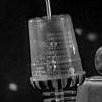Frequently, after a topographic survey, I have to prove the obtained area of a Lot of Land.
This lisp creates a table with the analytical method of the Gauss's area formula.
I do not need absolute precision, but logically (owing to rounding) by increasing decimal units you can get a result as close to the real one.
It is still to be completed, but I never have time to finish it.
You can change the nonsense I wrote in English
AreaG.LSP


